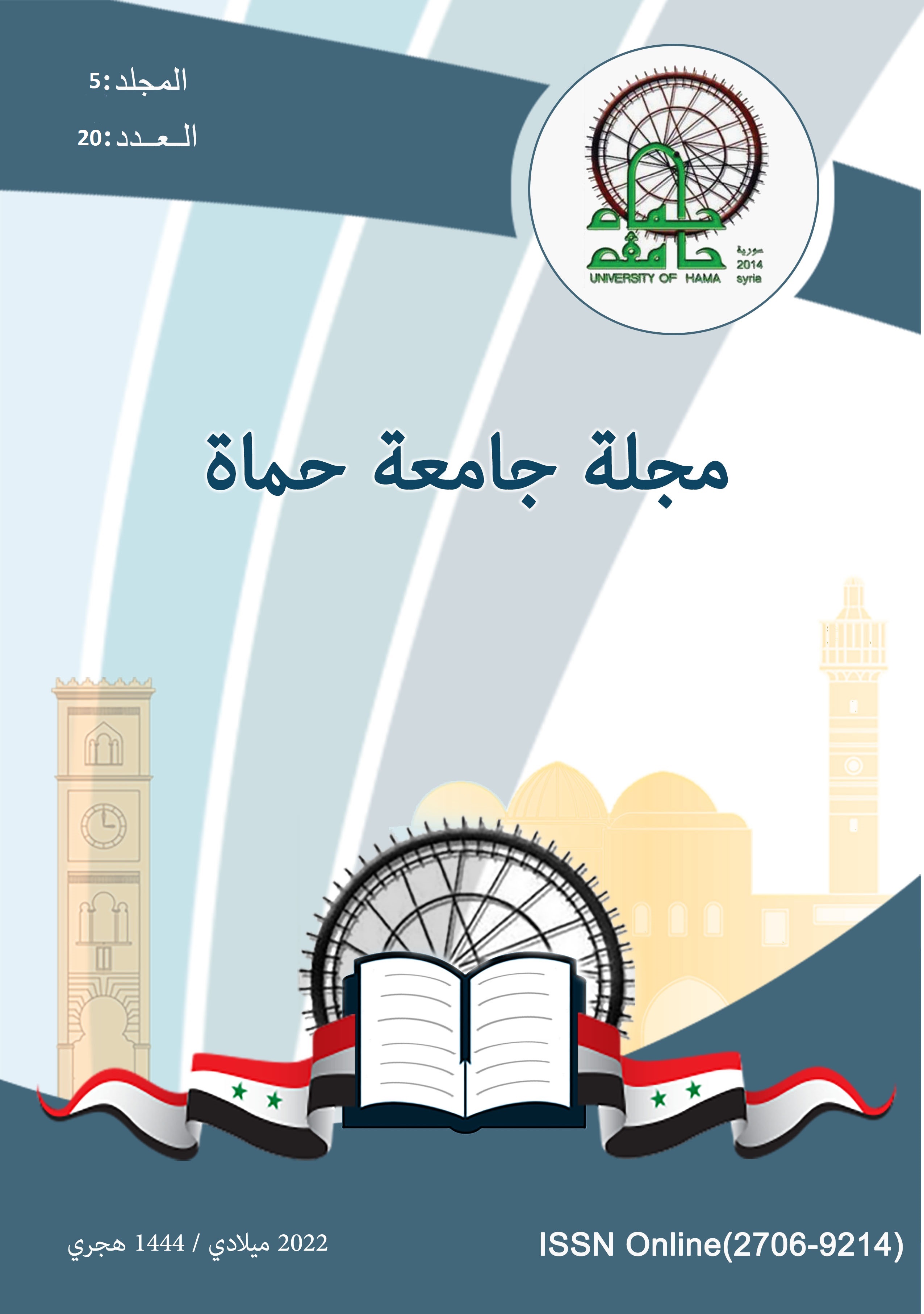Economic efficiency of water use in some Arab countries And how to get benefit from it in Syria
الملخص
Water is the most important resource on Earth, as it is the basic element for the continuation of life in all its forms and activities in agriculture, industry, tourism and services.
Water policies in Syria depends on expanding the use of water at low tariffs, which has led to the waste of water and threatening its sustainability. This research paper aimed to study the possibility of benefiting from water practices in (Tunisia, Jordan, Egypt, Saudi Arabia), to improve practices related to the economic efficiency of water use in Syria.
The research came to extracting the most important water procedures directed by the economic efficiency of use. In Tunisia, an upward tariff was applied, which aims to recover the full costs of operation and maintenance, and takes into account the regional dimension and development projects. This tariff has led to a decrease in the demand for irrigation water up to 20%. The added value of agricultural production increased by 29%. The research also showed a decrease in the percentage of water used in agriculture in Jordan from 80% to 52% as a result of implementing a water policy that gives priority to use based on the economic return of the water unit and the efficiency of employment. In Egypt, the volume of irrigation water decreased by 18.8%, and the acre net yield increased from 1.67 to 2.6 pounds/m3 as a result of adjusting the crop composition based on the criteria of economic efficiency of the unit of water and contribution to the national product. As for Saudi Arabia, a water strategy has been implemented that depends on enhancing the productivity of the water sector and increasing its contribution to the GDP, reforming water tariffs, increasing the recovery rate, limiting the cultivation of green fodder and wheat, and moving towards more economically efficient crops.
The research also showed that the application of the economic efficiency criterion for water used in Syria will contribute to reducing the excessive use of water, by reforming the water tariff system, increasing the rate of recovery, applying the upward tariff, and giving priorities to crops with the greatest economic return and industrial uses.
References
1. حسيان، كفاح و غيث، مصطفى و علام، محمد. (2006). إدارة الطلب على المياه بالوطن العربي، حالة دراسية: سورية. المؤتمر الدولي الثاني للموارد المائية والبيئة الجافة. الرياض، المملكة العربية السعودية، عدد الصفحات 40.
2. ضيف، عبد المنعم، و السيد، عبد الرحمن. (2016). الاستخدام الأمثل للموارد المائية بالزراعة المصرية في ظل الوضع الراهن. جمهورية مصر العربية. مجلة جامعة المنصورة للعلوم الإقتصادية والإجتماعية الزراعية، مجلد 7، ص: 643-651.
3. عرفة، محمود عبد التواب. (2020). بعض أساليب التحليل الاقتصادى لقياس الكفاءة الاقتصادية للرى. كلية الزراعة، جامعة القاهرة، جمهورية مصر العربية. 8 ص.
4. الفيلالي، سامي حسن. (2002). وسائل ترشيد استخدام مياه الري في الزراعة المصرية. وزارة الزراعة واستصلاح الأراضي. الدقي، الجيزة، جمهورية مصر العربية. 24 ص.
5. اللوزي، سالم. (2005). دراسة تطور أساليب استرداد تكلفة إتاحة مياه الري على ضوء التطورات المحلية والدولية. المنظمة العربية للتنمية الزراعية، الطبعة الأولى. الخرطوم، السودان. 136 ص.
6. منتدى الرياض الاقتصادي. (2013). المياه كمورد اقتصادي مطلب أساس للتنمية. الرياض، المملكة العربية السعودية. 145 ص.
7. وزارة البيئة والمياه والزراعة. (2018). الاستراتيجية الوطنية للمياه حتى عام 2030. الرياض، المملكة العربية السعودية. 125 ص.
8. وزارة البيئة والمياه والزراعة. (2020). الرياض، المملكة العربية السعودية.
9. وزارة الفلاحة والصيد البحري والموارد المائية. (2020)، تونس، الجمهورية التونسية.
10. وزارة المياه والري الأردنية. (2021). عمان، المملكة الأردنية الهاشمية.
11. وزارة المياه والري، سياسة إحلال المياه وإعادة الاستخدام. (2016). عمان، المملكة الأردنية الهاشمية. 27 ص.
12. وزارة المياه والري، سياسة إدارة الطلب على المياه. (2016). عمان، المملكة الأردنية الهاشمية. 23 ص.
13. وزارة المياه والري، سياسة إعادة توزيع المياه. (2016). عمان، المملكة الأردنية الهاشمية. 31 ص.
المراجع الأجنبية:
1. AQUASTAT database (2021). FAO's Global Information System on Water and Agriculture. https://www.fao.org/aquastat/en/ .
2. Thivet, G., & Fernandez, S. (2012). Water Demand Management: The Mediterranean Experience. Global Water Partnership. Stockholm, Sweden. pp 74.


